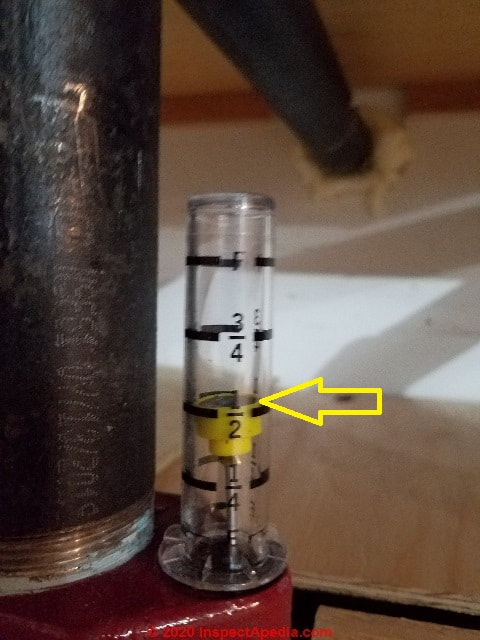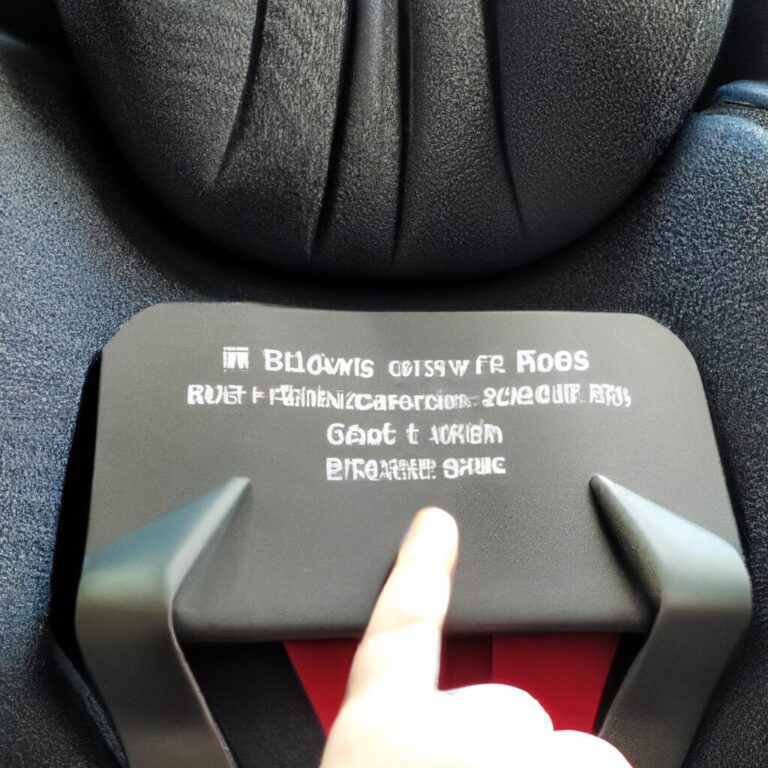How to Read an Oil Gauge
To read an oil gauge, check the level on the dipstick when the engine is off and cool. Additionally, ensure the oil falls within the designated range on the dipstick for optimal engine performance.
Proper maintenance and regular oil checks are crucial to keeping your vehicle running smoothly. By learning how to read the oil gauge correctly, you can prevent potential engine issues and extend the life of your car. In this guide, we will explore simple steps to interpret oil gauges accurately, providing you with essential knowledge to maintain your vehicle’s health.
Follow these straightforward instructions to become proficient in checking oil levels like a pro.

Credit: www.firestonecompleteautocare.com
Importance Of Oil Gauge
The oil gauge in a vehicle is a critical component that provides essential information about the oil levels in the engine. Understanding how to read the oil gauge is crucial for maintenance and the longevity of the engine. The oil gauge helps in preventing potential engine damage, ensuring optimal performance, and extending the life of the vehicle.
Checking Oil Levels Regularly
Regularly checking the oil levels is essential to ensure that the engine has an adequate supply of oil for proper lubrication. Oil lubrication is crucial for reducing friction and heat within the engine components, preventing premature wear, and maintaining efficient performance.
Preventing Engine Damage
Monitoring the oil gauge is vital in preventing engine damage caused by low oil levels. Adequate oil levels are necessary to ensure that all moving parts within the engine are properly lubricated, preventing friction and excessive heat build-up that can lead to severe damage and costly repairs.

Credit: www.crowleyfuel.com
Understanding The Oil Gauge
An oil gauge is a crucial component of any vehicle, providing vital information about the oil level. Understanding how to read an oil gauge is essential for proper maintenance of your vehicle.
Components Of An Oil Gauge
- The oil gauge consists of a sensor that measures the level of oil in the engine.
- It is connected to a display panel on the dashboard to provide real-time oil level information.
Interpreting Oil Gauge Readings
- Check the oil gauge when the engine is off to get an accurate reading.
- Ensure the oil level is within the recommended range to prevent engine damage.
- If the oil gauge shows low oil level, add the necessary amount of oil immediately.
Steps To Read An Oil Gauge
Learning how to read an oil gauge is essential for maintaining the health of your car’s engine. Proper monitoring of oil levels can prevent costly repairs and ensure the longevity of your vehicle.
Locating The Oil Gauge
Find the oil gauge on the dashboard of your car, usually represented by a small dial or digital display. It indicates the oil pressure within the engine.
Checking Oil Level On Dipstick
To check the oil level, park your car on level ground, wait for the engine to cool down, then locate the dipstick near the engine. Pull out the dipstick, wipe it clean, reinsert it, and then pull it out again to check the oil level.
Interpreting Oil Pressure Gauge
Keep an eye on the oil pressure gauge while driving. Fluctuations in the gauge may indicate low oil levels or engine issues. If the gauge reads low pressure, immediately check the oil level and top up if necessary.
Common Oil Gauge Readings
When checking your oil gauge, it’s important to understand the different readings it can display. Common oil gauge readings include normal oil level and pressure, low oil level and pressure, and high oil level and pressure. Let’s take a closer look at each of these readings.
Normal Oil Level And Pressure
When your oil gauge shows a normal reading, the oil level is within the recommended range and the oil pressure is at a healthy level. This indicates that your engine is well-lubricated and operating smoothly. It’s essential for the optimal functioning of your vehicle.
Low Oil Level And Pressure
If the oil gauge displays a low reading, it indicates that the oil level is below the acceptable range, or the oil pressure is lower than it should be. This can lead to inadequate lubrication of internal engine components, potentially causing damage and reduced engine performance. It’s crucial to address low oil levels and pressure promptly to avoid costly repairs.
High Oil Level And Pressure
On the other hand, a high oil gauge reading may suggest an overfilled oil reservoir or excessive oil pressure. This can result in foaming of the oil, which diminishes its lubricating properties and can lead to engine wear. It’s important to rectify high oil levels and pressure to maintain the proper functioning of your vehicle.
Maintenance Tips
Proper maintenance of your oil gauge is crucial for the health and longevity of your engine. By regularly monitoring your oil gauge and making necessary adjustments, you can prevent major engine problems down the line. In this section, we will discuss three essential maintenance tips for reading an oil gauge.
Regular Oil Changes
Regular oil changes are vital for maintaining the optimal performance of your engine. Over time, the oil in your engine can become dirty and lose its lubricating properties. By changing your oil at recommended intervals, which may vary depending on your vehicle’s make and model, you can ensure that the engine is not compromised by insufficient lubrication.
During an oil change, it is also crucial to replace the oil filter. The oil filter traps debris and contaminants, preventing them from circulating in your engine. A clogged oil filter can lead to poor oil flow and, ultimately, engine damage. Additionally, using high-quality oil recommended by the manufacturer can further enhance your engine’s performance and protection.
Addressing Oil Leaks
Oil leaks can negatively affect your oil gauge’s readings and signify other underlying issues. If you notice oil puddles under your parked vehicle or a decrease in oil levels, it is crucial to address the leak as soon as possible. Ignoring oil leaks can result in low oil levels, excessive engine wear, and even engine failure.
To identify the source of the oil leak, inspect the engine compartment thoroughly. Look for signs of oil residue, wet spots, or any damaged gaskets or seals. Most common areas where leaks occur include the oil pan, valve cover gasket, or oil filter. If you are unable to locate or fix the oil leak yourself, it is recommended to seek professional help to prevent further damage and ensure accurate oil gauge readings.
Seeking Professional Help
While regular maintenance and addressing oil leaks are essential, some issues may require professional assistance. If you notice persistent abnormalities in your oil gauge readings, such as consistently high or low pressure, it is advisable to consult a qualified mechanic or technician.
Professional technicians have the expertise and necessary tools to diagnose and resolve complex oil gauge problems. They can perform diagnostics, identify any internal engine issues that may be affecting oil pressure, and recommend appropriate solutions. Seeking professional help early can prevent costly repairs and ensure the longevity of your engine.

Credit: halloilgasandelectric.com
Frequently Asked Questions On How To Read An Oil Gauge
What Do The Numbers On The Oil Gauge Mean?
The numbers on the oil gauge represent the oil pressure inside the engine. Higher numbers indicate higher pressure, while lower numbers indicate lower pressure. It’s important to monitor this gauge to ensure proper lubrication and prevent engine damage.
What Should My Oil Pressure Gauge Read?
Your oil pressure gauge should read between 25 to 65 psi when the engine is running at normal operating temperature. If it’s consistently below or above this range, have it inspected by a mechanic to avoid potential engine damage.
Do You Read The Oil Gauge From The Top Or Bottom?
Read the oil gauge from the top for accurate measurement. Ensure the oil level is between the min and max markings.
How Do You Read An Oil Fuel Gauge?
To read an oil fuel gauge, check the gauge on your dashboard for the current fuel level. The gauge’s needle will show how much fuel is left in your tank. Keep an eye on it to know when you need to refuel.
How Do You Read An Oil Gauge?
To read an oil gauge, locate the gauge on your vehicle’s dashboard, check the numerical value or markings indicating the oil level, and ensure it falls within the recommended range.
Why Is It Important To Read An Oil Gauge?
Reading an oil gauge is crucial because it provides valuable information about your vehicle’s oil level. Monitoring the oil level helps ensure proper lubrication and prevents damage to the engine.
What Happens If The Oil Level Is Too Low?
If the oil level is too low, it can lead to engine damage and decreased performance. Insufficient lubrication can cause friction, heat, and faster wear and tear of engine parts, leading to costly repairs or engine failure.
Conclusion
To summarize, being able to read your oil gauge is crucial for maintaining the health of your engine. By regularly monitoring the oil level and pressure, you can prevent potential damage and ensure optimal performance. Remember to refer to your vehicle’s manual for specific instructions and never neglect this simple yet essential maintenance task.

